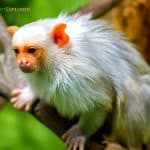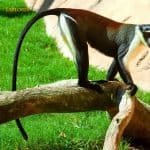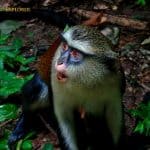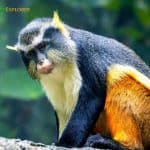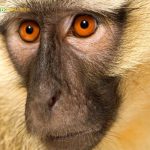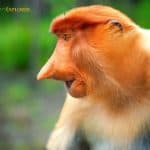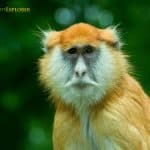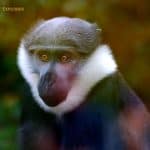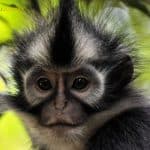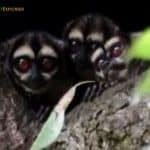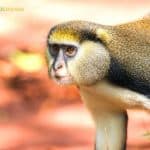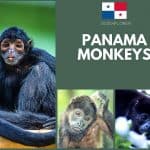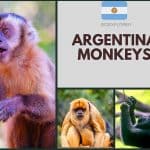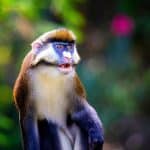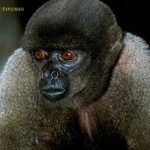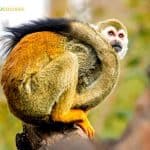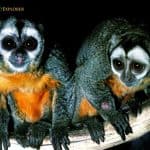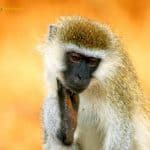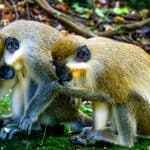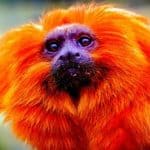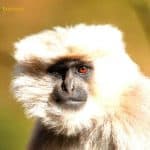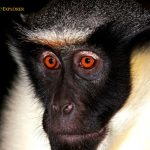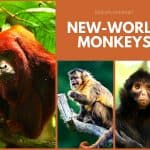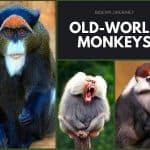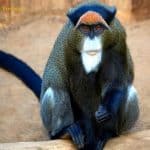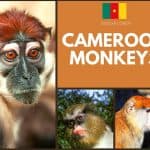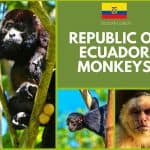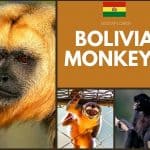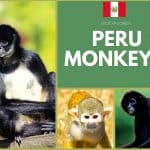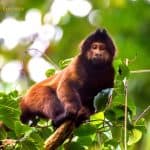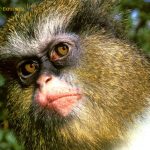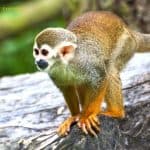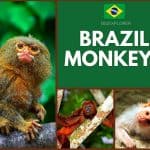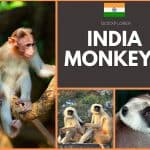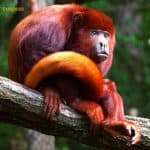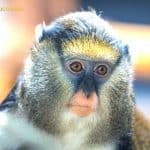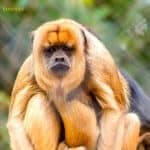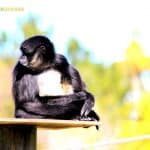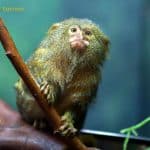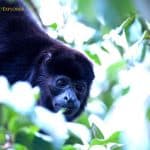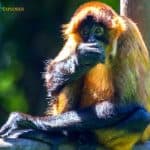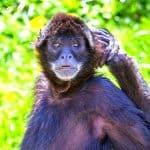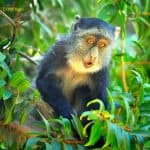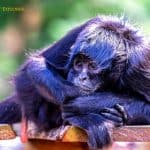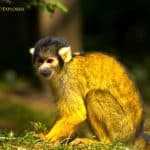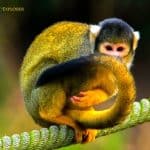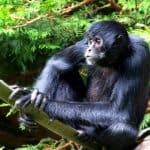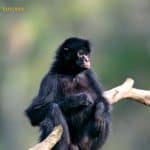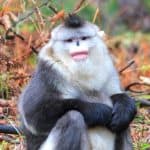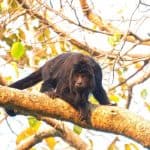Monkey - search results
If you're not happy with the results, please do another search
Gray Snub-Nosed Monkey
The gray snub-nosed monkey (Rhinopithecus brelichi), also called Guizhou golden monkey, Brelich's snub-nosed monkey, and Guizhou snub-nosed monkey is a species of primate in the Cercopithecidae family. The confirmed range of the gray snub-nosed monkey is endemic to China (Fanjingshan National Nature Reserve in Wuling Mountains of Guizhou Province).
Dryas Monkey
The Dryas monkey, also called the Salonga monkey, Inoko, or Ekele is a little-known Old World primate only found in the Congo Basin and restricted to the Congo River's left bank. Unlike guenon monkeys, which make loud leaps and resounding calls, dryas monkeys move silently.
Blue Nile Patas Monkey
The Blue Nile patas monkey, also known as Heuglin's patas monkey, is an Old-World monkey endemic to Africa along the Blue Nile Valley in Sudan, Ethiopia, and possibly South Sudan. Blue Nile patas monkeys are one of the fastest land monkeys, reaching speeds of around 34 miles per hour.
White Monkeys
Here are the types of white monkeys from both Old-world and New-world types. Some of these monkeys typically have other fur color coats, such as black or orange, to make them appear very colorful.
Roloway Monkey
Roloway monkeys (Cercopithecus roloway), also called Roloway guenons, are Old World monkeys native to Ghana and the Ivory Coast. Roloway monkeys resemble Diana monkeys in appearance, a species with which they were once confused.
Tantalus Monkey
The tantalus monkey (Chlorocebus tantalus) is an Old World monkey endemic to Africa, ranging from Ghana to Sudan. It was initially described as a subspecies of Grivet (Chlorocebus aethiops). Tantalus monkeys are very similar to vervet monkeys but are smaller in size.
Wolf’s Mona Monkey
The Wolf's mona monkey (Cercopithecus wolfi), also called the wolf monkey, is a colorful Old-World monkey in the Cercopithecidae family. Wolf's mona monkeys have huge cheek pouches.
Vervet Monkey
The vervet monkey (Chlorocebus pygerythrus) is an Old World monkey of the Cercopithecidae family endemic to southern and eastern Africa. Not only can vervet monkeys skilfully navigate through the treetops, but they can also swim.
Proboscis Monkey
The proboscis monkey (Nasalis larvatus) is an Old World arboreal species with an unusually large nose, reddish-brown skin color, and a long tail. The proboscis monkey is a large species and one of the largest old-world monkey species native to Asia.
Patas Monkey
The Patas Monkey (Erythrocebus patas), also called the Hussar Monkey or Wadi Monkey is a terrestrial monkey distributed in semi-arid areas of West and East Africa. The patas monkey lives in multi-female groups of about 60 individuals (although much larger aggregations have been reported).
Schmidt’s Red-tailed Monkey
The Schmidt's red-tailed monkey, also called the red-tailed guenon, Schmidt's guenon, or black-cheeked white-nosed monkey is a primate species in the Cercopithecidae family. The Schmidt's red-tailed monkey is named for its red coloration on the underside of its tail, as well as the bicolor coloration of its tail as the reddish color increases from the base to the tip.
L’hoest Monkey
The L'Hoest monkey (Allocrocebus lhoesti), or mountain monkey, is a vervet monkey found in the upper eastern Congo Basin. L'Hoest monkeys live in relatively small groups, are dominated by females, and have only one male.
North Sumatran Leaf Monkey
The North Sumatran leaf monkey (Presbytis thomasi), also called Thomas's langur, is a primate species in the Cercopithecidae family. The North Sumatran leaf monkeys spend most of the day in groups resting, moving, or feeding.
Spix’s Night Monkey
The Spix's night monkey (Aotus vociferans), also called the Spix's owl monkey, Colombian gray nocturnal monkey, and noisy night monkey is a species of night monkey native to South America.
Mona Monkey
The Mona monkey (Cercopithecus mona) is an Old World monkey living between Cameroon and Ghana in West Africa. Mona monkeys live in large groups of 5 to 50 individuals.
Panamian Monkeys
Panama is home to 8 species of New World monkeys, which comprise 6 genera. Examples of these species include the Panamanian night monkey (Aotus zonalis), the brown-headed spider monkey (Ateles fusciceps), and the mantled howler monkey (Alouatta palliata).
Argentinian Monkeys
Five different species spanning 3 genera of New World monkeys can be found in Argentina, though none of them are endemic to the country. These species are generally found in forested regions, mainly in provinces like Santa Fe, Chaco, and Formosa.
Angolan Monkeys
Angola is home to 13 species of Old World monkeys that make up 6 genera; however, none of these species are endemic to the country. One of the most popular species is the red-tailed monkey. Explore all Angola monkeys here.
Old World Monkeys Vs. New World Monkeys
Old-world and New-world monkeys are two types of monkeys within Primates. Explore all differences between them from all aspects here.
Lowe’s Mona Monkey
Lowe's Mona monkey (Cercopithecus lowei) is an Old-World monkey in the Cercopithecidae family found from Ghana to the Ivory Coast. Lowe's Mona monkeys generally consist of one male and several females.
Lesser Spotted-Nosed Monkey
The lesser spotted-nosed monkey, lesser spotted monkey, or lesser white-nosed monkey (Cercopithecus petaurista) is a primate species in the Cercopithecidae family. The lesser spotted-nosed monkey is diurnal, arboreal, and cryptic.
Humboldt’s Woolly Monkey
Humboldt's woolly monkey, common woolly monkey, or brown woolly monkey (Lagothrix lagothricha) is a woolly monkey endemic to South America. Humboldt's woolly monkeys can show subtle mood swings and intentions with various facial expressions.
Humboldt’s Squirrel Monkey
Humboldt's squirrel monkey (Saimiri cassiquiarensis) is a species of squirrel monkey found in South America's tropical rainforests, except for the coastal forests of southeastern Brazil.
Humboldt’s Night Monkey
The three-striped night monkey (Aotus trivirgatus), also known as the northern owl monkey, Humboldt's Night Monkey, or northern night monkey, is one of several currently recognized species of owl monkeys.
Grivet Monkey
The Grivet monkey (Chlorocebus aethiops) is an Old World monkey with long tufts of white fur on the sides of its face. Grivet monkeys are very social animals. They travel in small groups and are among the few species to have groups with multiple males.
Green Monkey
The green monkey (Chlorocebus sabaeus), also called the sabaeus monkey, is an Old World monkey with golden-green fur, pale feet, and hands. Green monkeys' locomotion varies little, regardless of substrate or habitat. In nearly all circumstances, they move quadrupedally in the treetops or on the ground.
Orange Monkeys
Some monkey species are born with bright orange fur; the coat color would gradually turns black as they age, but some stay orange throughout life. Explore all types of orange-colored monkeys here.
Gray Monkeys
Gray-colored monkeys are one of the commonly found monkeys in primates. Explore all types of gray monkeys here.
Golden Snub-Nosed Monkey
The golden snub-nosed monkey (Rhinopithecus roxellana) is an Old World monkey of the subfamily Colobinae. Golden snub-nosed monkeys are highly social animals that exhibit group behaviors known as fission and fusion.
Diana Monkey
The Diana monkey is an Old-World primate found in the high-canopy forests of Liberia, Sierra Leone, and the western Ivory Coast. Diana monkeys get their name from the white crescent-shaped headband that resembles the crescent moon on the forehead of the Roman goddess Diana, protector of woodlands and wildlife.
Types of New-World Monkeys
The term “New World monkey” is a broad label that refers to any species that falls under one of the five taxonomic families of the Ceboidea superfamily: Cebidae, Callitrichidae, Atelidae, Pitheciidae, and Aotidae. Explore all New-World monkeys and their characteristics.
Types of Old-World Monkeys
The term “Old World monkey” refers to the primates that make up the taxonomic family known as “Cercopithecidae”. The family is split into two subfamilies: Cercopithecinae, which has 78 species, and Colobinae, which has 82 species. Explore all about old-world monkeys here.
De Brazza’s Monkey
De Brazza's monkey is an Old-World primate native to central Africa's swamp and riverine forests. It is the largest species of the guenon family and one of the most widespread African arboreal primates.
Cameroon Monkeys
The nation houses 20 different species of Old World monkeys, though none of them are endemic to the country. Main monkey species that can be found in Cameroon include the olive baboon (Papio anubis), the agile mangabey (Cercocebus agilis), and the red-eared monkey (Cercopithecus erythrotis).
Ecuadorian Monkeys
Ecuador is home to 21 species of New-World monkeys, though none are endemic to the country. Some examples of these monkey species include the red titi monkey (Plecturocebus discolor), the Colombian white-throated capuchin (Cebus capucinus), and the saddleback tamarin (Leontocebus fuscicollis). Explore all monkeys of Ecuador.
Democratic Republic of the Congo Monkeys
Democratic Republic of the Congo is also home to 35 Old World monkeys, with 18 endemic species. Some examples of these endemic species include the golden-bellied mangabey (Cercocebus chrysogaster), the wolf’s monkey (Cercopithecus wolfi), and the Ulindi river red colobus (Piliocolobus lulindicus).
Bolivian Monkeys
Bolivia is a South American landlocked country, known as the most isolated country on the continent. The nation is also home to 25 species of New World monkeys, though just two are endemic to it: the Beni titi monkey (Plecturocebus modestus) and the Ollala Brothers’ titi (Plecturocebus olallae).
Peruvian Monkeys
Peru is home to 52 species of New-World monkeys; 13 of the species are endemic to the nation. Explore all monkeys of Peru here.
Robust Capuchin Monkey
Robust capuchin monkeys, also called crested capuchin monkeys, are capuchin monkeys of the Sapajus genus. Some crested capuchin species are known to use stone tools in the wild. These are used to crack nuts and other seeds, dried fruits, and even oysters.
Crested Mona Monkey
The crested mona monkey, also called the golden-bellied monkey, golden-bellied guenon, or crowned guenon, is a species of African primate in the Cercopithecidae family in west-central Africa. Like many species of Cercopithecus, the crested mona monkey has large cheek pouches that it fills with seeds and fruit while foraging for food.
Guianan Squirrel Monkey
The Guianan squirrel monkey, also called the South American squirrel monkey, is a squirrel monkey found in Guiana, Brazil, and Venezuela. Saimiri sciureus was once thought to belong to the Collins' squirrel monkey and the Humboldt's squirrel monkey. Still, genetic research in 2009 and 2015 showed they were different species.
Brazilian Monkeys
Brazil is home to 131 species of Old World and New World monkeys, with 83 being endemic to the country. Some common examples of these species that only reside in Brazil include the red-handed howler monkey (Alouatta belzebul), the buffy-headed marmoset (Callithrix flaviceps), and the crested capuchin (Sapajus robustus).
Indian Monkeys
India has many cultural and religious ties with monkeys as a Hindu-dominant country. For instance, the Hanuman langur, one of India's most widespread monkey species, was named after Hanuman, a powerful part-monkey deity in Hinduism
Red Howler Monkey
The Colombian red howler or Venezuelan red howler is a South American species of howler monkey, a New World species of monkey found in the western Amazon basin. Colombian red howler monkeys live in relatively large social groups composed of around 10 individuals, with just one or possibly two of the individuals being male.
Campbell’s Mona Monkey
Campbell's Mona monkey, also called the Campbell's monkey or Campbell's guenon is a primate species in the Cercopithecidae family. The species was named after Henry Dundas Campbell in 1838.
Brown Howler Monkey
The brown howler monkey, also called the brown howler monkey, is a species of New World monkey that lives in the forests of southeastern Brazil and northeastern Argentina. Despite the common name "brown howler", its color is remarkably variable, with some individuals mainly appearing black or reddish-orange.
White-bellied Spider Monkey
The white-bellied spider monkey (Ateles belzebuth), also called the long-haired or white-fronted spider monkey, is an endangered species of spider monkey, a species of New-World monkey. These arboreal monkeys spend most of their time in the canopy. They rarely go down. When they do, they drink water, eat dirt, traverse a treeless area, or run away from an aggressive opponent.
Pygmy Marmoset (Finger Monkey)
The pygmy marmoset (smallest monkey), genus Cebuella (also known as Finger Monkey), is a small genus of New-World monkeys endemic to the tropical rainforests of the western Amazon Basin in South America. Pygmy marmosets are also highly territorial, using scent glands to mark territories of up to 100 hectares.
Types of Rainforest Monkeys
Explore types of rainforest monkeys that are found in different rainforest regions of the world. Rainforests are biomes that have a rich flora and fauna. Animal species diversity is highest in the rainforests than anywhere else on earth.
Mantled Howler Monkey
The Mantled howler monkey (Alouatta palliata) is a species of howler monkey, a New World monkey native to South and Central America. The species gets its name "mantled" from the long, protective hairs on its sides.
Central American Squirrel Monkey
The Central American squirrel monkey also called the red-backed squirrel monkey, is a squirrel monkey type native to the Pacific coast of Panama and Costa Rica. Central American squirrel monkeys spend most of their lives in the middle and upper layers of the tree canopy.
Geoffroy’s Spider Monkey
Geoffroy's spider monkey (Ateles geoffroyi) also called the Central American spider monkey or black-handed spider monkey, is a species of spider monkey. The species name geoffroyi is honored by Étienne Geoffroy Saint-Hilaire, a French naturalist. The Geoffroy's spider monkey consists of five recognized subspecies residing in various parts of Central America and Mexico. These include the Hooded spider monkey (A. g. grisescens) in southern Mexico, the ornately-patterned Ornate spider monkey (A. g. ornatus) in Costa Rica and Panama, the Yucatan spider monkey (A. g. yucatanensis) in the Yucatan Peninsula, the Mexican spider monkey (A. g. vellerosus) in Veracruz, and the nominate Nicaraguan spider monkey subspecies (A. g. geoffroyi) found in Nicaragua, Honduras and northern Costa Rica.
Blue Monkey
The blue monkey is a species of Old-World monkey endemic to east and central Africa, ranging from the upper Congo Basin east to the East African Rift Valley and south to Zambia and northern Angola.
Black-Headed Spider Monkey
The black-headed spider monkey (Ateles fusciceps) is a species of New-World monkey native to Central and South America. The species name "Ateles" is derived from the Greek word "ateleia" meaning imperfect or incomplete. It was likely chosen because these monkeys do not have a thumb. There are 2 additional sub-species of black-headed spider monkey namely Brown-headed spider monkey (Ateles fusciceps fusciceps) and Colombian spider monkey (Ateles fusciceps rufiventris).
Black-capped Squirrel Monkey
The black-capped squirrel monkey is a New-World primate species endemic to the upper Amazon basin in Bolivia, eastern Peru, and western Brazil. Primarily, black-capped squirrel monkeys are arboreal and found in native and plantation forests and some managed areas close to running water.
Black Squirrel Monkey
The black squirrel monkey, also called the black-headed squirrel monkey or the blackish squirrel monkey is a small New-World monkey native to the central Amazonian region of Brazil. The black squirrel monkey closely resembles the much more common Bolivian squirrel monkey. However, the latter lacks the central black back.
Black Spider Monkey
Ateles paniscus, the black spider monkey, is one of three sub-species of spider monkeys. Aside from the face, feet, and hands, they are covered in jet-black hair longer than a typical primate. Of all the Ateles species, Ateles paniscus is the largest.
Peruvian Spider Monkey
Peruvian spider monkeys, like other Ateles species, have a prehensile tail that can be used to facilitate brachiation. Typically, Peruvian spider monkeys have completely black fur and complexions, unlike the lighter red-faced black spider monkey.
Black Snub-nosed Monkey
The black-and-white snub-nosed monkey, also called the Yunnan snub-nosed monkey, is a large black-and-white primate living only in Yunnan Province in southern China, where it is known to the local population as the Yunnan golden-haired monkey. The species gets the "snub-nosed" part of its name due to its lack of nasal bones.
Black Howler monkey
Alouatta caraya is found in the tropical rain forests of central South America, extending through eastern Bolivia, Paraguay, southern Brazil, and northern Argentina. Alouatta Caraya monkeys are sexually dimorphic, with males weighing an average of 6.7 kg and females an average of 4.4 kg.





